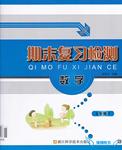
On the 36th day after they had voted, Americans finally learned Wednesday who would be their next president: Governor George W. Bush of Texas.
Vice President Al Gore, his last realistic avenue for legal challenge closed by a U. S. Supreme Court decision late Tuesday, planned to end the contest formally in a televised evening speech of perhaps 10 minutes, advisers said.
They said that Senator Joseph Lieberman, his vice presidential running mate, would first make brief comments. The men would speak from a ceremonial chamber of the Old Executive office Building, to the west of the White House.
The dozens of political workers and lawyers who had helped lead Mr. Gore’s unprecedented fight to claw a come-from-behind electoral victory in the pivotal state of Florida were thanked Wednesday and asked to stand down.
“The vice president has directed the recount committee to suspend activities,” William Daley, the Gore campaign chairman, said in a written statement.
Mr. Gore authorized that statement after meeting with his wife, Tipper, and with top advisers including Mr. Daley.
He was expected to telephone Mr. Bush during the day. The Bush campaign kept a low profile and moved gingerly, as if to leave space for Mr. Gore to contemplate his next steps.
Yet, at the end of a trying and tumultuous process that had focused world attention on sleepless vote counters across Florida, and on courtrooms form Miami to Tallahassee to Atlanta to Washington the Texas governor was set to become the 43d U. S. president.
The news of Mr. Gore’s plans followed the longest and most rancorous dispute over a U. S. presidential election in more than a century, one certain to leave scars in a badly divided country.
It was a bitter ending for Mr. Gore, who had outpolled Mr. Bush nationwide by some 300000 votes, but, without Florida, fell short in the Electoral College by 271votes to 267—the narrowest Electoral College victory since the turbulent election of 1876.
Mr. Gore was said to be distressed by what he and many Democratic activists felt was a partisan decision from the nation’s highest court.
The 5-to –4 decision of the Supreme Court held, in essence, that while a vote recount in Florida could be conducted in legal and constitutional fashion, as Mr. Gore had sought, this could not be done by the Dec. 12 deadline for states to select their presidential electors.
James Baker 3rd, the former secretary of state who represented Mr. Bush in the Florida dispute, issued a short statement after the U. S. high court ruling, saying that the governor was “very pleased and gratified.”
Mr. Bush was planning a nationwide speech aimed at trying to begin to heal the country’s deep, aching and varied divisions. He then was expected to meet with congressional leaders, including Democrats. Dick Cheney, Mr. Bush’s ruing mate, was meeting with congressmen Wednesday in Washington.
When Mr. Bush, who is 54, is sworn into office on Jan.20, he will be only the second son of a president to follow his father to the White House, after John Adams and John Quincy Adams in the early 19th century.
Mr. Gore, in his speech, was expected to thank his supporters, defend his hive-week battle as an effort to ensure, as a matter of principle, that every vote be counted, and call for the nation to join behind the new president. He was described by an aide as “resolved and resigned.”
While some constitutional experts had said they believed states could present electors as late as Dec. 18, the U. S. high court made clear that it saw no such leeway.
The U.S. high court sent back “for revision” to the Florida court its order allowing recounts but made clear that for all practical purposes the election was over.
In its unsigned main opinion, the court declared, “The recount process, in its features here described, is inconsistent with the minimum procedures necessary to protect the fundamental right of each voter.”
That decision, by a court fractured along philosophical lines, left one liberal justice charging that the high court’s proceedings bore a political taint.
Justice John Paul Stevens wrote in an angry dissent:” Although we may never know with complete certainty the identity of the winner of this year’s presidential election, the identity of the loser is perfectly clear. It is the nation’s confidence in the judge as an impartial guardian of the law.”
But at the end of five seemingly endless weeks, during which the physical, legal and constitutional machines of the U. S. election were pressed and sorely tested in ways unseen in more than a century, the system finally produced a result, and one most Americans appeared to be willing at lease provisionally to support.
The Bush team welcomed the news with an outward show of restraint and aplomb. The governor’s hopes had risen and fallen so many times since Election night, and the legal warriors of each side suffered through so many dramatic reversals, that there was little energy left for celebration.
The main idea of this passage is
[A]. Bush’s victory in presidential election bore a political taint.
[B]. The process of the American presidential election.
[C]. The Supreme Court plays a very important part in the presidential election.
[D]. Gore is distressed.
What does the sentence “as if to leave space for Mr. Gore to contemplate his next step” mean
[A]. Bush hopes Gore to join his administration.
[B]. Bush hopes Gore to concede defeat and to support him.
[C]. Bush hopes Gore to congraduate him.
[D]. Bush hopes Gore go on fighting with him.
Why couldn’t Mr. Gore win the presidential election after he outpolled Mr. Bush in the popular vote? Because
[A]. the American president is decided by the supreme court’s decision.
[B]. people can’t directly elect their president.
[C]. the American president is elected by a slate of presidential electors.
[D]. the people of each state support Mr. Bush.
What was the result of the 5—4 decision of the supreme court?
[A]. It was in fact for the vote recount.
[B]. It had nothing to do with the presidential election.
[C]. It decided the fate of the winner.
[D]. It was in essence against the vote recount.
What did the “turbulent election of 1876” imply?
[A]. The process of presidential election of 2000 was the same as that.
[B]. There were great similarities between the two presidential elections (2000 and 1876).
[C]. It was compared to presidential election of 2000.
[D]. It was given an example.
【小题1】A
【小题2】B
【小题3】C
【小题4】D
【小题5】B
【小题1】 A. 布什在总统选举中获胜沾上了政治污点。整篇文章环绕这一点而写。文章一开始就写戈尔在高等法院裁决下退出竞选,再写布什得胜后的低调行动表示对戈尔的期望。仁厚点出271——276选举团票布什的险胜是和全国最高法院的欺诈性裁决有关,这令戈尔痛心疾首,令布什等感恩戴德。最后集中写了高等法院司法程序沾上了政治污点,以及当选之布什的后果——大多数美国人似乎暂时会支持。这一切说明布什胜胜不武,而戈尔却是虽败尤胜。
B. 美国总统选举过程,文章过程的焦点在布什获胜之因,不单单是过程,故B. 项不对。
C. 高等法院在总统选举中起着重要的作用。其作用是欺诈性裁决,偏袒布什获胜,是政治污点,反映了布什的手段。 D. 戈尔很难受,这是事实,但不是中心思想。
【小题2】 B. 布什希望戈尔(能退一步)承认失败,并支持他,而戈尔确实是也这样做了。所以他的助手称戈尔为“resolved and resigned.” 坚决而又顺从天命的人。至少在他的演讲中号召人们追随新总统。
A. 布什希望戈尔参与他的政府。 C. 布什希望戈尔祝贺他。 D. 布什希望戈尔继续和他斗下去。
【小题3】 C. 美国的总统由选举团提名选举产生。见难句译注5和6。
A. 美国总统由高等法院裁决。 B. 人民不能直接选举总统。这只是第一步的原因,主要原因在C. D. 各州人民支持布什。
【小题4】 D. 其结果实质上就是反对重新计票。这在第十二段阐述得很清楚:高等法院5比4之裁决实质上就是重新计票在12月12日州选举总统选举团的最后一天之前是不能进行的,而戈尔曾认为弗罗里达州可以法律和宪法的形式重新计票。总统选举团一产生。总统由选举团提名选举产生,那么重新计票与否对总统选举实际上是毫无作用,所以说5比4裁决12月12日之前……实质上就是反对重新计票。
A. 其结果实际上是支持重新计票。不对。 B. 其结果和总统选举毫无关系,不对,关系很大,见D项注释。 C. 其结果决定胜者的命运。
【小题5】 B. 它隐射2000年的总统选举和1876年的总统选举两者之间有着很大的相似之处。见难句译注6,海因斯认为输了,正准备放弃,谁知涉嫌欺骗行为,对有争议的州进行重新计票。结果是海因斯以一票之差险胜。重新计票以及险胜都和2000年总统选举相似,其它方面,如以为输而没有输,重新计票州多而且起到作用等……,都和2000年选举不同,所以只能选B项,A项完全一样是错误的。
A. 两者选举总统过程一个样。 C. 把1876年总统选举比作2000年的总统选举。 D. 作为例子给出。 这里没有说明。


 品学双优卷系列答案
品学双优卷系列答案 小学期末冲刺100分系列答案
小学期末冲刺100分系列答案 期末复习检测系列答案
期末复习检测系列答案 超能学典单元期中期末专题冲刺100分系列答案
超能学典单元期中期末专题冲刺100分系列答案科目:高中英语 来源:高考三人行·英语 题型:050
阅读理解
A basketball star who plays for the PLA has been picked for a team in Northern America’s National Basketball Association and made his first visit to Dallas on April, 2001.
Wang Zhizhi, who just turned 22, averaged 13.5 points at the 2000 Olympics, eighth-best in Sidney scoring. He became the first Asian player to be drafted into the NBA. When he was picked by the Dallas Mavericks (小牛队). Wang is 2.12 metres tall and weighs 115kg. He is known as “Big Zhi.”He was chosen as the 36th pick in annual draft of NBA.
Mavericks special assistants Morlon Wiley and Greg Dreiling, both big men, have worked with Wang and assistant coach Donnie Nelson in practice scrimmages (争抢) designed to simulate (模拟) conditions Wang will face in games.
Wiley said, “Fundamentally, his jump shot is perfect for a big guy. Really we have nothing to lose. He is a diamond in the rough.”
“He looks great,” Donnie Nelson said. But this is a long term process. I’ve got to stay here with him because he needs that connection right now.
“Wang Zhizhi is a young basketball player with great talent.” says Mavericks’ head coach Don Nelson, who spent nine days in Beijing and Shanghai in 2000 carrying out a series of basketball clinics.“How many 7’1” guys do you see as athletic as Wang Zhizhi? None that I can think of. I’m very happy China has produced the first Asian player to make the NBA.”
1.Which is not the proper description to Wang Zhizhi?
[ ]
A.He is known as “Big Zhi” just because he is as tall as 2.12 metres, like a giant.
B.He is the first Chinese player drafted into the NBA.
C.Besides his coach, there are two other big assistants working with Wang now.
D.7’1” was the best score of Wang in the 2000 Sidney Olympics.
2.What’s the proper understanding of the underlined sentence?
[ ]
A.His athletic talent has nearly come to an end.
B.His talent in basketball can hardly be developed.
C.He is a talented basketball player. But it needs time to train him great.
D.All the above.
3.What is the incorrect reason for Wang being drafted by the Mavericks ?
[ ]
A.He is so tall and is perfect at jump shot.
B.He has the talent in basketball and act wonderfully in the 2000 Sidney Olympics.
C.He has the experience of playing in the PLA.
D.He is so athletic as a 7’1” guy.
查看答案和解析>>
科目:高中英语 来源:2011-2012学年江苏南京三中(六中校区)高二下学期期末英语试卷(带解析) 题型:阅读理解
Kuss Middle School serves students in Fall River, Mass. , a former mill town that has struggled economically for decades. Students at Kuss have struggled, too, usually falling short of making the academic progress required under the No Child Left Behind law.
Then, last year, the school experimented with extending the school day. Teachers got paid at a higher hourly rate.
Students weren't thrilled at first with leaving school at 4:15 p.m. instead of at 2:20 p.m. But the added hours gave them more time for physical education and let them select special interest classes. By the end of the year, student scores had risen by enough to enable Kuss to make the progress required under the federal No Child Left Behind law.
The only surprise is that more districts haven't lengthened school schedules set decades ago to accommodate (适应) a farm economy rather the information economy of today.
| School days The USA ranks 36th of 40 industrialized nations in average weekly instructional time. Selected countries: 1) Thailand--30.5 hours 2) Korea--30.3 hours 7) China--26.5 hours 14) France--24.6 hours 15 ) UK--24.6 hours 16) Mexico--24.2 hours 23 ) Japan--23.8 hours 26)Canada--23.6 hours 36)USA--22.2 hours 40)Brazil--19 hours |
| A.Experiments with extended school hours produce academic gains. |
| B.Kuss Middle School sets a good example for US education. |
| C.Academic progress has achieved under the No Child Left Behind law. |
| D.Information age calls for more instructional lime at all schools. |
| A.students from many developed countries spend more time at school |
| B.American students do a bad job at science subjects |
| C.teachers are paid at a higher rate with time added |
| D.a longer school day works better than a longer school year |
| A.Kuss Middle School lies in where a farm economy is changing to an information one. |
| B.Kuss Middle school has joined the federal "No Child Left Behind" progrann |
| C.Neither teachers nor students are happy with the longer school day. |
| D.Adding class time functions at Kuss Middle School. |
| A.a positive attitude towards adding school time |
| B.a negative attitude towards adding school time |
| C.a changing attitude towards adding school time |
| D.a right attitude towards adding school time |
查看答案和解析>>
科目:高中英语 来源:2013届江苏省泰州二中高三期初(暑期)检测英语试卷(带解析) 题型:阅读理解
Kuss Middle School serves students in Fall River, Mass. , a former mill town that has struggled economically for decades. Students at Kuss have struggled, too, usually falling short of making the academic progress required under the No Child Left Behind law.
Then, last year, the school experimented with extending the school day. Teachers got paid at a higher hourly rate.
Students weren't thrilled at first with leaving school at 4:15 p.m. instead of at 2:20 p.m. But the added hours gave them more time for physical education and let them select special interest classes. By the end of the year, student scores had risen by enough to enable Kuss to make the progress required under the federal No Child Left Behind law.
The only surprise is that more districts haven't lengthened school schedules set decades ago to accommodate (适应) a farm economy rather the information economy of today.
| School days The USA ranks 36th of 40 industrialized nations in average weekly instructional time. Selected countries: 1) Thailand--30.5 hours 2) Korea--30.3 hours 7) China--26.5 hours 14) France--24.6 hours 15 ) UK--24.6 hours 16) Mexico--24.2 hours 23 ) Japan--23.8 hours 26)Canada--23.6 hours 36)USA--22.2 hours 40)Brazil--19 hours |
| A.Experiments with extended school hours produce academic gains. |
| B.Kuss Middle School sets a good example for US education. |
| C.Academic progress has achieved under the No Child Left Behind law. |
| D.Information age calls for more instructional lime at all schools. |
| A.students from many developed countries spend more time at school |
| B.American students do a bad job at science subjects |
| C.teachers are paid at a higher rate with time added |
| D.a longer school day works better than a longer school year |
| A.Kuss Middle School lies in where a farm economy is changing to an information one. |
| B.Kuss Middle school has joined the federal "No Child Left Behind" progrann |
| C.Neither teachers nor students are happy with the longer school day. |
| D.Adding class time functions at Kuss Middle School. |
| A.a positive attitude towards adding school time |
| B.a negative attitude towards adding school time |
| C.a changing attitude towards adding school time |
| D.a right attitude towards adding school time |
查看答案和解析>>
科目:高中英语 来源:2013届江苏南京三中(六中校区)高二下学期期末英语试卷(解析版) 题型:阅读理解
Kuss Middle School serves students in Fall River, Mass. , a former mill town that has struggled economically for decades. Students at Kuss have struggled, too, usually falling short of making the academic progress required under the No Child Left Behind law.
Then, last year, the school experimented with extending the school day. Teachers got paid at a higher hourly rate.
Students weren't thrilled at first with leaving school at 4:15 p.m. instead of at 2:20 p.m. But the added hours gave them more time for physical education and let them select special interest classes. By the end of the year, student scores had risen by enough to enable Kuss to make the progress required under the federal No Child Left Behind law.
The only surprise is that more districts haven't lengthened school schedules set decades ago to accommodate (适应) a farm economy rather the information economy of today.
|
School days The USA ranks 36th of 40 industrialized nations in average weekly instructional time. Selected countries: 1) Thailand--30.5 hours 2) Korea--30.3 hours 7) China--26.5 hours 14) France--24.6 hours 15 ) UK--24.6 hours 16) Mexico--24.2 hours 23 ) Japan--23.8 hours 26)Canada--23.6 hours 36)USA--22.2 hours 40)Brazil--19 hours |
New research suggests the time is ready for a change:
Matched against 39 other developed countries, the United States is near the bottom in the rankings of average weekly instructional time in school. Measured over 12 years, students in the top-scoring countries spend the equivalent of a full extra year in school.
US students perform poorly on math and science tests compared to their international peers, according to a US Education Department comparison released earlier this month. In math, American 15-year-old scored near the bottom among the study's 30 developed countries.
Most countries that boost the number of minutes spent on math instruction find pay offs in improved math scores, according to a study released this month by the Brookings Institution. Small in creases in the school day are more effective than a longer school year, the report concluded.
The most encouraging news about the benefits of extending the school day comes from Massachusetts, where an experiment with 10 schools, including Kuss, appears to be working. Those 10 schools lengthened their instructional days by 25% and boosted their state scores in math, English and science at all grades.
Perhaps the concept won't work everywhere. Certainly, it won't instantly be popular. But it's obvious that a problem exists or that adding class time seems to help.
1.What is the main idea of the above passage?
|
A.Experiments with extended school hours produce academic gains. |
|
B.Kuss Middle School sets a good example for US education. |
|
C.Academic progress has achieved under the No Child Left Behind law. |
|
D.Information age calls for more instructional lime at all schools. |
2.A longer school day is suggested for the following reasons except that _________.
|
A.students from many developed countries spend more time at school |
|
B.American students do a bad job at science subjects |
|
C.teachers are paid at a higher rate with time added |
|
D.a longer school day works better than a longer school year |
3.Which statement is true of Kuss Middle School?
|
A.Kuss Middle School lies in where a farm economy is changing to an information one. |
|
B.Kuss Middle school has joined the federal "No Child Left Behind" progrann |
|
C.Neither teachers nor students are happy with the longer school day. |
|
D.Adding class time functions at Kuss Middle School. |
4.The writer has expressed ____________.
|
A.a positive attitude towards adding school time |
|
B.a negative attitude towards adding school time |
|
C.a changing attitude towards adding school time |
|
D.a right attitude towards adding school time |
查看答案和解析>>
湖北省互联网违法和不良信息举报平台 | 网上有害信息举报专区 | 电信诈骗举报专区 | 涉历史虚无主义有害信息举报专区 | 涉企侵权举报专区
违法和不良信息举报电话:027-86699610 举报邮箱:58377363@163.com